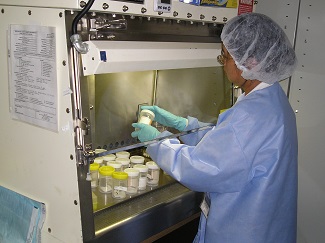Common Obstacles on the Road to Maggot Debridement Therapy
June 23, 2017
Bob Hope and Bing Crosby starred in a series of films called "On the Road" in which the duo traveled around the globe, facing a variety of amusing obstacles and mishaps. Therapists and patients desiring maggot debridement therapy (MDT) for their non-healing wounds often face a variety of obstacles, too... though they may not seem quite as amusing. Let's consider some of these obstacles and examine ways to avoid or mitigate them.
We can organize the most likely obstacles chronologically:
- Lack of awareness and knowledge about MDT;
- Obtaining authorization to use MDT at your facility;
- Finding a supplier;
- Receiving the maggots, safe and sound and on time.
Educating Clinicians and Patients on Maggot Debridement Therapy
Perhaps you are knowledgeable about maggot therapy, but need to get your colleagues up to speed. Perhaps you and your colleagues have a lot of experience with maggot therapy, but your patients have never heard of it. Or maybe it was a patient who desperately brought the idea to you, after you recommended amputation as the best option. In any of these situations, the following resources should provide you and/or your patients with all you need to get up to speed.
The BioTherapeutics, Education & Research (BTER) Foundation has a wide array of information and support documents on their website, along with references and therapist referrals. The website also houses free downloadable support documents such as Policy & Procedure templates and patient educational brochures ("Is MDT for Me?"). You can also find educational videos are recorded lectures and webinars. Finally, if you have specific questions or need assistance, you can contact therapists and educators through the website to assist you.
For general information on MDT, a PubMed search is always a good place to start. Additionally, maggot suppliers often have therapist consultants available to help with specific questions. For example, I am now retained by Monarch Labs to be available for patients and therapists, 24/7. Finally, this WoundSource blog is a wonderful source of information; it includes over a dozen maggot therapy-related posts... and you are already here!
Breaking Misconceptions About Maggot Therapy
Another common obstacle is the ill-informed doctor. Since medicinal maggots are regulated in the U.S. as a prescription-only medical device, you will need buy-in from the prescribing doctor. Unfortunately, some doctors have not seen maggot therapy in action before; they are aware of maggots' repulsiveness but not their benefits. So, to them, a wound may not be "bad enough" to warrant MDT until it is time to amputate (by which time it may be too late for salvage). Clearly, no treatment as effective, safe, and inexpensive as maggot therapy should be withheld except as a last resort. Yet, it is quite common for some doctors to withhold maggot therapy months or even years, until all other options have been exhausted (or to discount the option of maggot therapy altogether). The best way to help clinicians understand and consider MDT is through education. When that fails, seeking a "second opinion" (another doctor) may be necessary. For more ideas (and a few smiles) regarding this common situation, check out the video: "Maggot Therapy Facts & Myths - Discussing MDT with your doctor".
Even if you know all about maggot therapy and you have identified a patient who might benefit from it, you may encounter some difficulties if your facility has not yet done maggot therapy. If you choose to pioneer maggot therapy at your institution, be prepared to answer a lot of questions, establish some policies and procedures, and establish a vendor in your facility's "system." If you need administrative approval, it can be even more challenging. A helpful resource might be the recent article published in Wound Care Advisor: "Using Maggots in Wound Care," Parts 1 and 2. As noted above, you can save a lot of time and energy by checking out the BTER Foundation's Policy and Procedure Template. If you need to put together a patient education program (not a bad idea), you can start with the BTER Foundation's Patient Education Brochure and their videotaped patient interviews.
Addressing Maggot Therapy Supply Challenges
If you and your facility are ready to begin maggot therapy, you will need a supplier. A web search should provide you with sources, but if not, you will find listings under maggot therapy supplies on the BTER Foundation website. In the U.S., there are only two producers of medical grade maggots: Monarch Labs (www.monarchlabs.com) and BioMonde (www.biomonde.com/us/).
Once the maggots are ordered, what could go wrong? Well, medicinal maggots are highly perishable. They are starving animals, susceptible to temperature extremes and lack of oxygen. Optimally, they need to be shipped overnight and used within 24 hours of arrival. But if they must be ordered to arrive shortly before use, what happens if they arrive late? They may miss the patient's appointment time! Speaking on behalf of my laboratory's experience, this actually occurs only about 1% of the time; but even just 1% of the time is a big problem. So my advice is generally to order the maggots to arrive the day before a patient comes in (so the maggots will still make it in time, even if they arrive the next day, or if a replacement has to be sent).
Complications and adverse events of therapy include an entirely different set of "out-of-the-ordinary" obstacles. They deserve our attention, but we will have to delve into those in a subsequent blog.
You can hear more about obstacles, and about biotherapy in general, by tuning in to the Biotherapy Live! Channel, coming soon on Facebook Live. You can make sure you don't miss the interactive monthly webinars by visiting the BTER Foundation's Facebook page at, then liking and following the page to receive notifications.
References
Sherman RA. Maggot therapy for foot and leg wounds. Int J Low Extrem Wounds. 2002;1:135-42.
Sherman RA, Mendez S, McMillan C. Using Maggots in Wound Care, Part 1. Wound Care Advisor. 2014; Volume 3 (https://woundcareadvisor.com/using-maggots-in-wound-care-part-1-vol3-no…).
Sherman RA, Mendez S, McMillan C. Using Maggots in Wound Care, Part 2. Wound Care Advisor. 2014; Volume 3 (https://woundcareadvisor.com/using-maggots-in-wound-care-part-2-vol3-no…).
About The Author
Ronald Sherman MD, MSC, DTM&H has led a long career at the forefront of biotherapy, pioneering the development of medicinal maggots for over 25 years. He is now retired from his faculty position at the University of California, but continues to volunteer as Director and Board Chair of the BTER Foundation, and as Laboratory Director of Monarch Labs.
Disclosure:
Ronald Sherman is not only the Director of the Biotherapeutics, Education & Research Foundation, but he is also the Founder and on-call (24/7) Physician Consultant for Monarch Labs, purveyor of Medical Maggots and other therapeutic animals.
The views and opinions expressed in this content are solely those of the contributor, and do not represent the views of WoundSource, HMP Global, its affiliates, or subsidiary companies.










